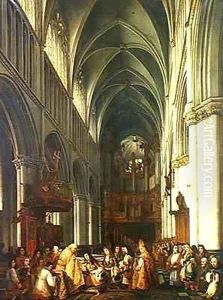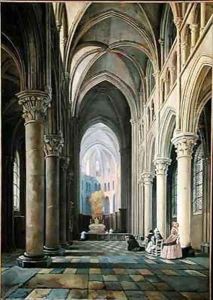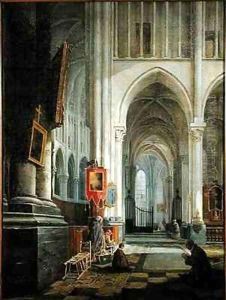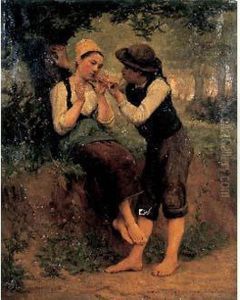Hippolyte Joseph Cuvelier Paintings
Hippolyte Joseph Cuvelier was a 19th-century French painter and lithographer, known primarily for his landscapes and urban scenes. Born in 1803, Cuvelier's early life and artistic training are not well-documented, but his works suggest that he had a strong foundation in the classical traditions of French art that were prevalent during his time.
Cuvelier's style was influenced by the Romantic movement, which was characterized by an emphasis on emotion and individualism, as well as a glorification of the past and nature. His landscapes often depicted the French countryside or rural settings, capturing the changing effects of light and atmosphere with a sensitivity that hinted at the approaching Impressionist movement.
Throughout his career, Cuvelier exhibited his works at the Paris Salon, the official art exhibition of the Académie des Beaux-Arts in Paris. His participation in these exhibitions suggests that he was a respected member of the French artistic community. Cuvelier's lithographs also contributed to his reputation, as the medium was popular in the 19th century for the reproduction of artworks and the dissemination of images.
Despite his involvement in the art scene of the time, Hippolyte Joseph Cuvelier did not achieve the same level of fame as some of his contemporaries. Much of his life and work remain relatively obscure, with limited documentation and scholarly attention. Cuvelier passed away in 1876, leaving behind a body of work that reflects the transitional period in French art from Romanticism to Impressionism. His contributions to landscape painting and lithography remain as a testament to his skill and the artistic trends of his era.



